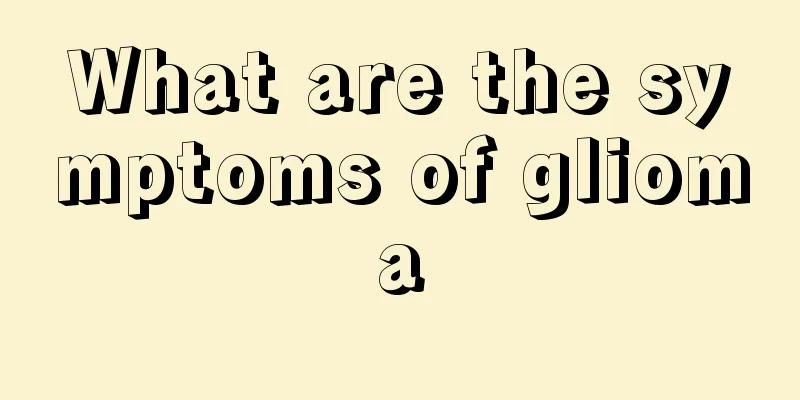What are the symptoms of glioma

|
The difficulty of treating any disease in the late stage is greater than that in the early stage, especially some brain tumor diseases, such as glioma. Glioma is difficult to cure and prone to recurrence, so early detection and early treatment are very important. So what are the symptoms of glioma? The following editor will lead you to learn about the symptoms of glioma. 1. Headache: About 30% of patients with brain gliomas experience headaches, and about 70% of them experience gradually worsening headaches. This type of headache is mostly non-specific, but only intermittent, mostly located on the same side of the lesion, and often manifests as dull pain rather than throbbing pain, which is sometimes difficult to distinguish from tension headaches. 2. Mental changes: About 15% to 20% of glioma patients have changes in mental state as the first symptom, mainly manifested in changes in emotions, personality, cognitive function, calculation ability and memory. 3. Focal neurological symptoms: The different locations of the tumors can also cause corresponding neurological deficit symptoms, such as limb paralysis, sensory impairment, aphasia, unsteady gait, hemianopsia, alexia and agraphia. 4. Cranial nerve symptoms: Damage to different cranial nerves will produce corresponding neurological symptoms, such as decreased vision, diplopia, strabismus and facial paralysis. 4. Phantom Smell Tumors in the temporal lobe can cause olfactory hallucinations, that is, the smell of an odor that does not exist, such as burnt rice or burnt rubber. 5. Vomiting Due to the increase in intracranial pressure, the respiratory center in the medulla oblongata is stimulated, resulting in vomiting. Vomiting often occurs after a headache and is in the form of a jet. 6. Epileptic seizures About one-third of patients with brain gliomas experience epileptic seizures, and the incidence increases to 50-70% during the course of the disease. Half of the epilepsy is localized, while the other half is generalized. The probability and manifestation of epileptic seizures caused by gliomas in different parts of the body are not the same. In addition to causing systemic seizures, epileptic seizures caused by tumors in different parts often have their own characteristics: for example, frontal lobe gliomas can cause paroxysmal convulsions and aphasia in the contralateral limbs; medial temporal lobe tumors are often accompanied by olfactory hallucinations, paroxysmal fear, and palpitations; and parietal lobe tumors can cause hemisensory disorders. 7. Mental changes About 15% to 20% of glioma patients experience changes in mental state as the first symptom, mainly manifested in changes in emotions, personality, cognitive function, calculation ability and memory. |
<<: What are the main symptoms of glioma
>>: What are the symptoms of different types of gliomas
Recommend
Will chemotherapy for colorectal cancer patients have side effects on the human body?
The reaction to chemotherapy varies from person t...
Dietary considerations for patients with nasopharyngeal carcinoma
Nasopharyngeal cancer is a disease that seriously...
What are the dangers of bone marrow extraction in children
Bone marrow extraction in children, also known as...
What should you pay attention to in your diet for rectal cancer
Colon cancer and rectal cancer are collectively r...
What are the symptoms of lumbar strain?
Lumbar muscle strain is a common disease in life....
How long can an 88-year-old with bile duct cancer live
The survival of an 88-year-old bile duct cancer p...
What are the common diagnostic methods for hamartoma
Hamartoma, we may be unfamiliar with the name of ...
What should I do if my neck bones are protruding?
The bones of the neck are mainly cervical vertebr...
My nose hurts and there is blood, what's going on?
Eyes, ears, mouth and nose, it can be said that t...
How to reduce the harm of secondhand smoke
Many people usually have the habit of smoking. We...
Taking birth control pills will make you fat, here is the real reason
Due to various pressures, having children is alwa...
Effects and efficacy of cephalosporin injection
Cephalexin is a drug that everyone is familiar wi...
How long after jogging can I drink water?
Jogging is a very good sport for the human body. ...
What are the hazards of copper to the human body
Copper is a very common metal and is widely used ...
Fiberoptic laryngoscopy and electronic laryngoscopy for laryngeal cancer
Laryngeal cancer is the most common malignant tum...









